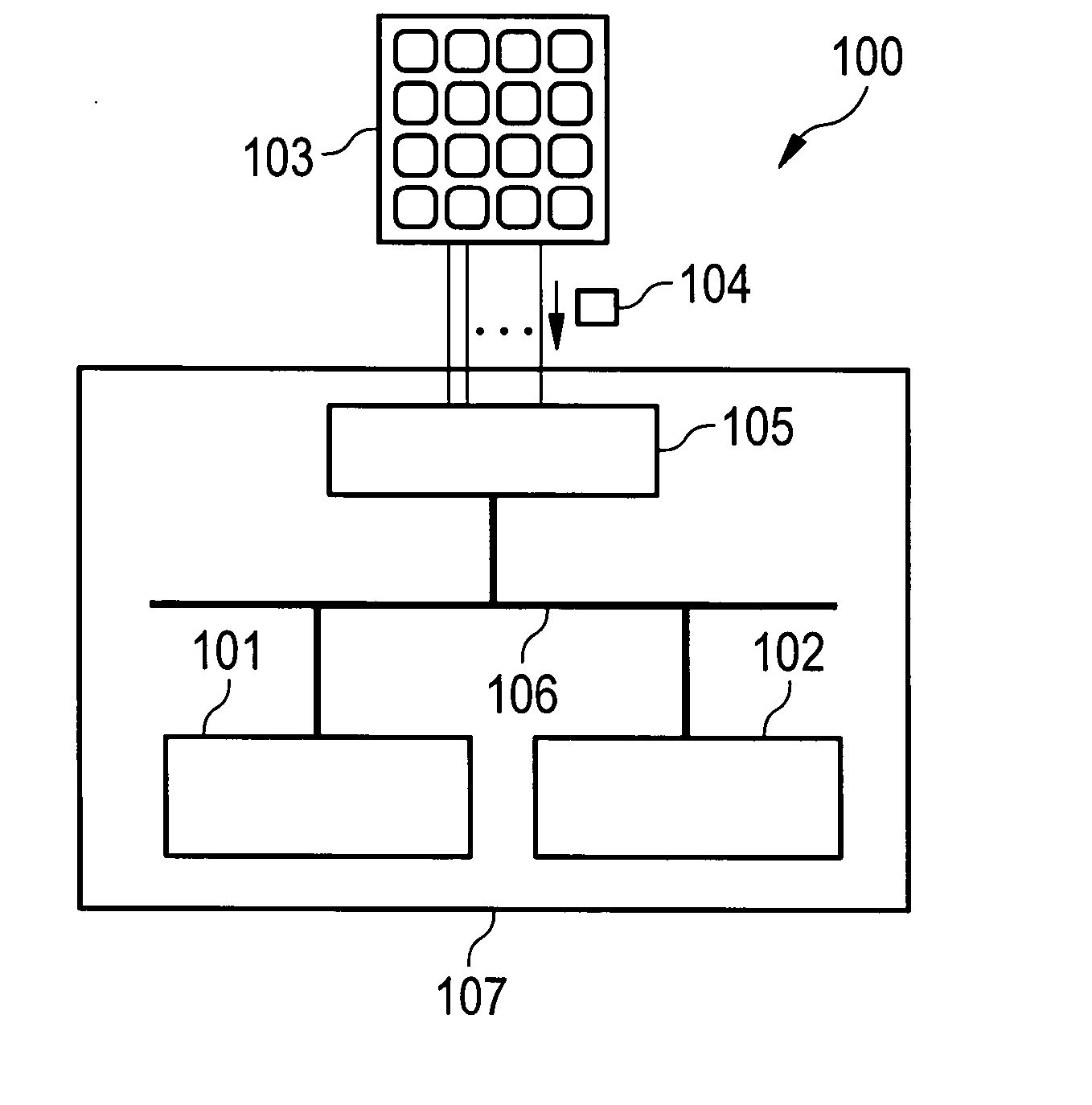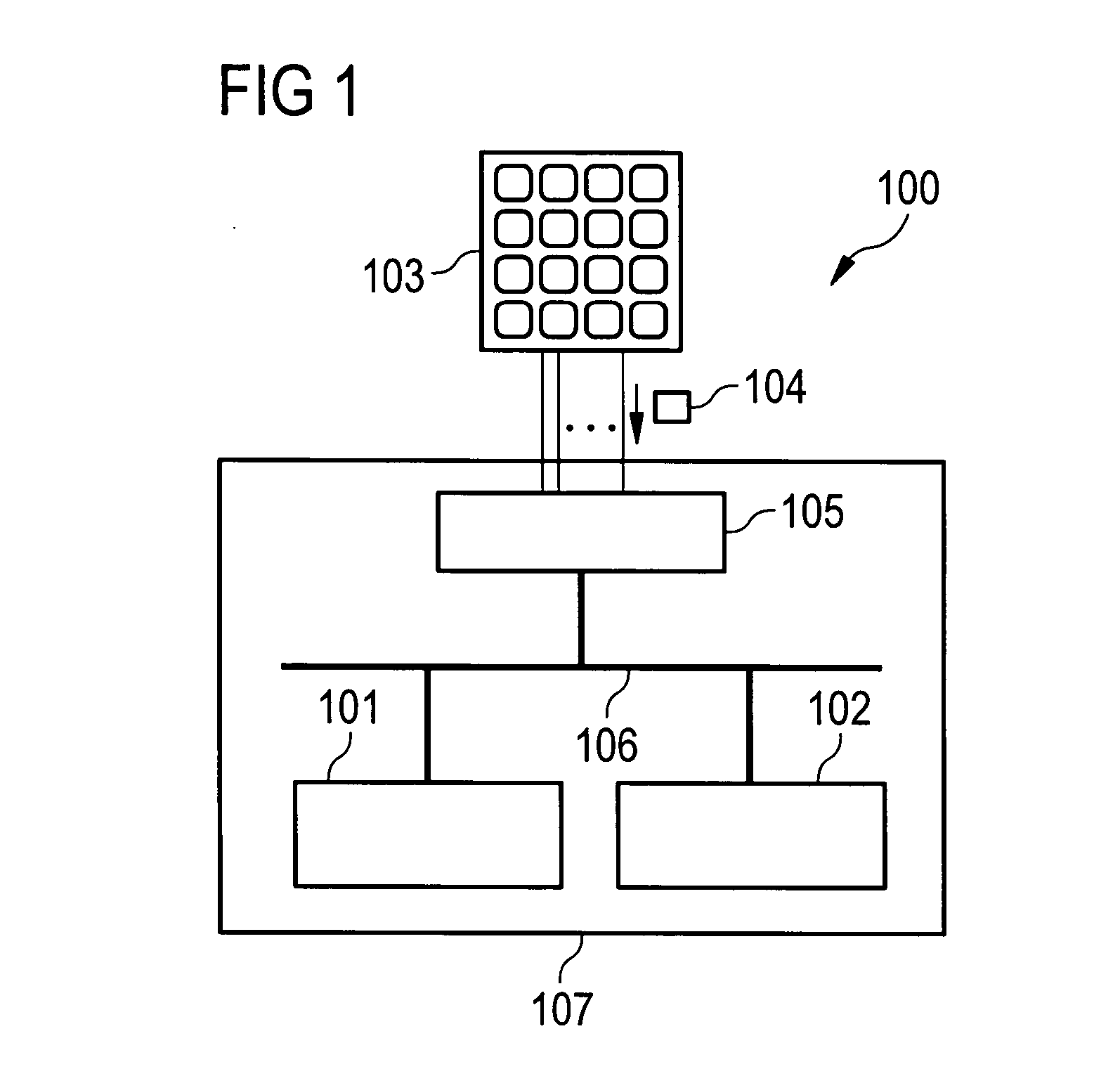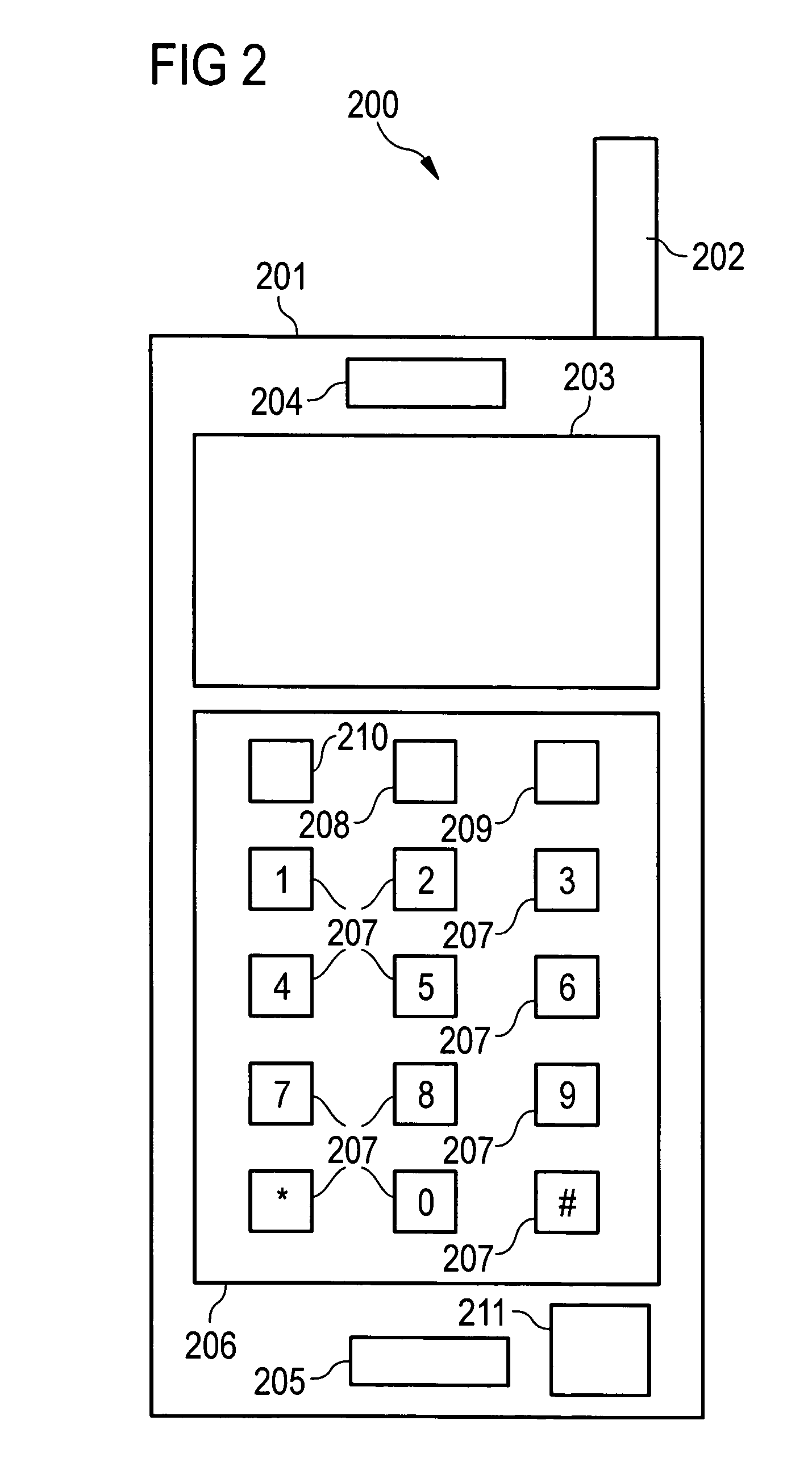Data processing device
a data processing device and data processing technology, applied in the field of telecommunication terminals, can solve problems such as user overtaxation, operating system, windows operating system or java platform, and user risk, and achieve the effect of improving the capabilities of peripheral devices
- Summary
- Abstract
- Description
- Claims
- Application Information
AI Technical Summary
Benefits of technology
Problems solved by technology
Method used
Image
Examples
second embodiment
[0162]FIG. 7 shows the procedure described above in a flowchart 700.
[0163] After activating the second data input mode (step 701), the trusted core processor 102 deactivates the performance or triggering of data input unit interrupts, particularly of keyboard interrupts at the application processor (702) and also deactivates (step 703) the access by the application processor 101 to the keyboard peripheral block 801 (compare FIG. 8) (generally to the data input unit peripheral block).
[0164] After that, the keyboard block registers, in which the information of the pressed keys is stored, are interrogated by the second processor, i.e. by the trusted core processor 102 (step 704).
[0165] If a secure data input mode conclusion key, preferably provided in the keyboard, is pressed, which is checked in a test step 705, it is assumed that the secure data input is ended and one or more confidential input data values are generated from the interrogated register values (step 706).
[0166] Afte...
third embodiment
[0171] it is provided that in the normal data input mode, the keyboard or the keypad directly transfers the information via the pressed key directly to the application processor 101.
[0172] After activation of the second data input mode (secure data input mode) and after the trusted core processor 102 has requested the input of the confidential data symbols, the keyboard peripheral driver device outputs, instead of the information about the pressed key, a predeterminable exchange data character / data symbol, for example the “*” symbol, which is displayed to the user, for example in the PIN input field on the graphical user interface of the data display unit 103.
[0173] When the digit keys are pressed by the user, this information is directly forwarded to the application processor 101 without exchange of the key information. The application processor 101 thus always obtains valid key information which it can display to the user on the graphical user interface, i.e. on the data display...
PUM
 Login to View More
Login to View More Abstract
Description
Claims
Application Information
 Login to View More
Login to View More - Generate Ideas
- Intellectual Property
- Life Sciences
- Materials
- Tech Scout
- Unparalleled Data Quality
- Higher Quality Content
- 60% Fewer Hallucinations
Browse by: Latest US Patents, China's latest patents, Technical Efficacy Thesaurus, Application Domain, Technology Topic, Popular Technical Reports.
© 2025 PatSnap. All rights reserved.Legal|Privacy policy|Modern Slavery Act Transparency Statement|Sitemap|About US| Contact US: help@patsnap.com



